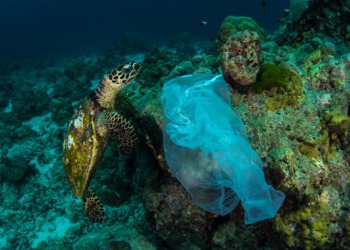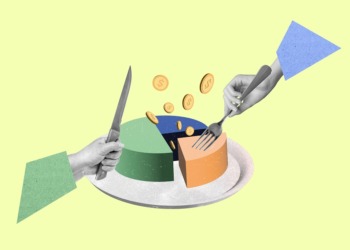Watching little ones play with colourful and soft toys, their smiles lighting up their faces, brings us so much happiness. Toys are an integral part of childhood, providing entertainment, education, and joy to millions of children worldwide. However, there is a silent threat lurking in these playthings – phthalates.
These chemical compounds, considered to be endocrine disruptors, are commonly used in plastic toys and have been found to pose serious health risks, potentially impairing fertility and disrupting the endocrine system.
In this article, we will delve into the dangers of phthalates in toys, exploring their adverse effects on health, the importance of strict regulation, and the role of awareness-raising for consumers. We will also shed light on a positive policy example from Vietnam, demonstrating the significance of proactive policy measures in ensuring children’s safety.

The toys industry is huge – but not safe enough yet
The global toy industry is very competitive and innovative and generates billions of U.S. dollars every year. Revenue in the toys and games market amounts to US$126.00bn in 2023 and the market is expected to grow annually by 2.55%. Globally, most revenue is generated in the United States, and in relation to total population figures, per-person revenues of US$ 16.40 in 2023. China is one of the world’s largest producers, exporters, and consumers of toy products and the toys industry is a key export sector.
These are amazing figures and show that the toy market needs to be strictly regulated regarding the production, distribution, and import. This is especially important when it comes to soft plastic toys for babies and toddlers. Parents must be confident that they can trust their child with safe toys.
Plastic items are an integral part of our daily lives. For more than six decades, they have been part of the products that surround us. However, to make plastic and vinyl flexible, durable, or pliable, plasticizers need to be added. Otherwise, the products would crack when bent. Phthalates plasticizers are synthetic chemicals commonly utilized compounds and we can find a whole range of them in our everyday items: in plastic sheeting, PVC floors, in lotions or fragrances or electronics, car care products or furniture, wallpaper, shower curtains, beach balls, roofing, wire, and cable as well as in toys and childcare products.
RELATED ARTICLES: Denmark’s PFAS Ban: A Landmark Decision for a Healthier Future | Unveiling the Dark Side of Skin Lightening: A Future Perspective | On ‘Presencing’: Interview With Dr. Otto Scharmer |
Phthalates – the invisible danger in toys
These plasticizers have been regarded as hazardous compounds due to their toxicological effects. Phthalates are not chemically binding to the plastic products they are added to with the result that they may leach out and release into the environment, air, or dust in the indoor climate, and can be absorbed by our body. This could be the air we breathe, the water we drink, etc. The youngest are particularly at risk as plastic toys may contain unsafe phthalates. Due to their natural curiosity, babies and toddlers explore toys and other items by putting them into their mouth. This makes them especially vulnerable to phthalates exposures that could have endocrine-disrupting effects. Apart from that, plastic toys feed the pollution crisis.
Children are more vulnerable than adults to the negative impacts of hazardous chemicals due to their lower weight, faster metabolism, and developing bodies. On top of that, children are subjected to multiple low-dose exposures every day from a range of products they are surrounded with. The health impacts of each individual substance are not fully known, and new chemicals are continually being developed. But numerous studies have shown the dangers of certain substances when they enter the human body.
These harmful effects include endocrine-disruptive diseases, neurological and reproductive disorders, learning disabilities, and various forms of cancer. This is why Phthalates are now classified by the ECHA (European Chemicals Agency) as carcinogenic, mutagenic, and reprotoxic substances. The EU currently has the most broadly defined regulations, which include the ban and regulation of at least 6 phthalates (see box).
ISO standards, the EU and the US established the regulation of six phthalates: DBP, BBP and DEHP (at a concentration of 0,1%) and DID, DIN and DNOP (of 0,1% for toys indented to be carried to children’s mouth)
Protecting children from endocrine disruptors in toys: The Vietnamese Way
More comprehensive regulations on Phthalates have also been taken up by countries in the Global South, such as The Socialist Republic of Vietnam. With its National Technical Regulation on Safety of Toys (Circular No. 09/2019/TT-BKHCN), Vietnam updates its restrictions on chemicals already in place in the country.
The policy, a Future Policy Award 2023 winner, modernizes the safety standards for toys in circulation on the Vietnamese toy market by establishing maximum-value limits on the concentration of different hazardous chemicals, including the six phthalates.
It also establishes a broad definition of toys since it includes any product for use in play under the age of 16 (whereas other countries or regions generally set a limit at 14 years old). The national legislation harmonises with more protective regulations already in place such as the European Directive on Phthalate-containing soft PVC toys and childcare articles.
Strengthening the compliance control of toys is another feature of the policy as it demands for certification, marking, and labelling mechanism. To circulate on the Vietnamese market, toys must carry the conformity marks (CR) (from a registered certification body) and respect the labelling legislation of goods. The Circular applies to both locally manufactured toys and those that are imported. In addition to regulating, the policy attempts to ensure that the regulation is properly enforced and to promote a shift in manufacturers activities towards the substitution of chemicals considered hazardous with non-toxic alternatives. The cooperation of different relevant governmental entities is another feature of the policy and enabling the intervention of relevant external stakeholders from civil society and the private sector.
The Way Forward: Education, education, education
A notable point is the communication effort to inform and educate the population about the policy and hazardous chemicals. There have been different actions such as articles in newspapers, workshops, seminars, campaigns, and awareness-raising interventions in schools to reach out to children. Still, marking and labelling procedures play central roles in changing consumer behaviour and parents feel now more confident when they buy toys for their children as they know whether the products, they purchase meet the country’s standards.
We are well on the way to making toys for children safe from dangerous plasticizers. But the challenges remain. In many countries there are inadequate consumer protection mechanisms, such as market surveillance systems, conformity assessment infrastructures, mechanisms for the registering of product-related complaints or product recalls. Also, insufficient resources to implement legal requirements remain a major challenge in many countries. In the absence of globally harmonized and legally binding chemical transparency information, new suppliers are allowed to enter the market with cheaper prices. Consumers, who lack technical knowledge on the content of products or are unable to afford expensive certified products, rely on what is available. This is especially problematic when it comes to children’s products that might contain toxic chemicals affecting their health or safety. Moreover, there needs to be a special focus on online trade and imports, as these can often undermine good and effective legislation.
The ban on these six phthalates and other hazards in children’s toys are good news for children and their right to grow up healthy. The ban has also contributed to switch to more “green” alternatives and to promote a green chemistry. Many countries have taken good steps, still – for the sake of our children – joint efforts to protect their health through comprehensive regulations must be strengthened.
About the author:
Samia Kassid is Senior Programme Manager of the programme “The Rights of Children and Youth” at the World Future Council. Samia holds a degree in national economy with a focus on development cooperation and environmental policy. She has been a passionate advocate for the rights of children and young people for decades.
Editor’s Note: The opinions expressed here by the authors are their own, not those of Impakter.com — In the Featured Photo: Baby in White and Blue Floral Shirt Sitting on White High Chair. Featured Photo Credit: © Photo by Oană Andrei via Pexels.










